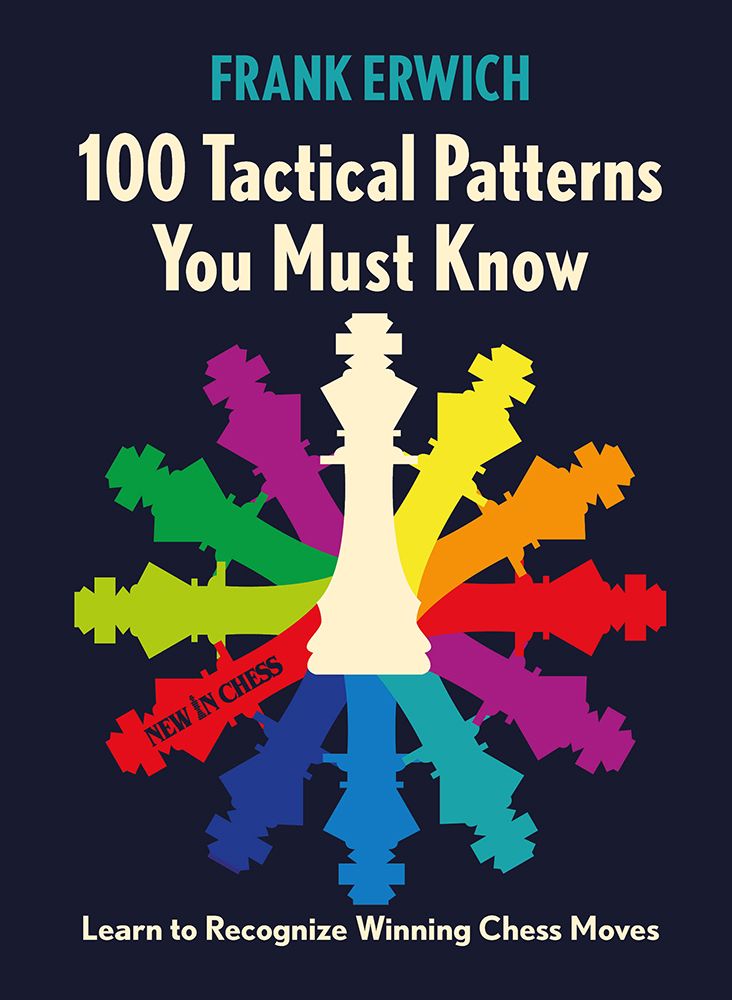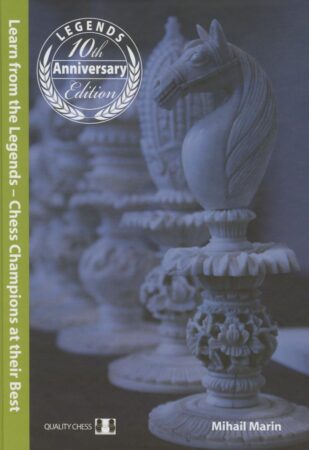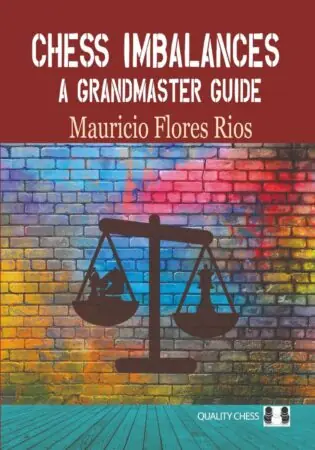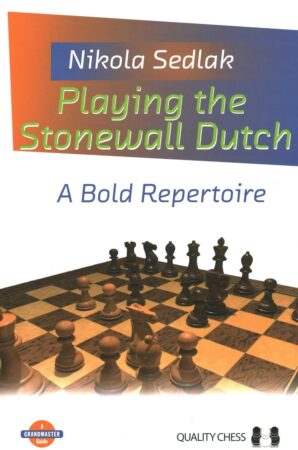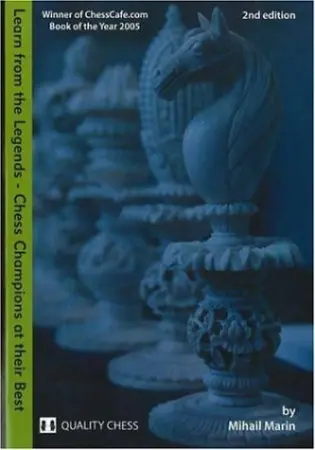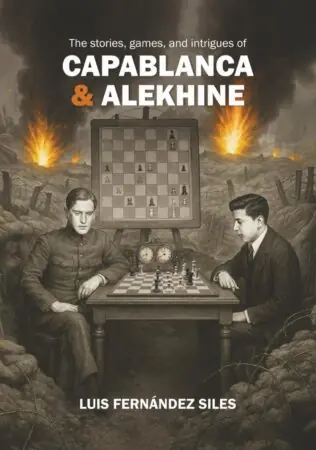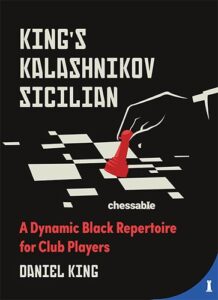Introduction
100 Tactical Patterns You Must Know is a great resource for anyone below 2000 FIDE. It teaches you important tactical motifs that occur frequently in actual play, making it a rare case of a chess book whose returns you will start noticing immediately. It’s structured well, Erwich’s writing is fun, engaging, and instructive, and the book wastes almost no time for the reader. It’s packed with useful information without too much embellishment or empathy, philosophical talk. Its purpose is to teach the reader how to spot tactical patterns during play, how to recognize the elements that make them possible, and how to act once you notice a pattern. Unlike the workbook, it focuses on explaining rather than forcing the reader to solve problems, which makes it a great “bus book”. You don’t need a board to read it as most of the diagrams will be very simple to follow even for beginners.
“A companion volume, The 100 Tactical Patterns You Must Know Workbook, is available too. Buy both of these excellent books, work hard on the examples, and in 2025, show the world how much of a tactical live wire you have become.”, Sean Marsh, Chess Magazine
Structure of the book
100 Tactical Patterns You Must Know is divided into 12 chapters. The final one goes over pattern combinations and the first 11 focus on a specific group of patterns. Each chapter is subdivided into more detailed themes. For example, the second chapter, “Discovered attacks and line clearances” is divided into 14 patterns such as the reversed windmill, the carousel, and the knight and bishop collaboration. I find the structure very pleasing. It’s easy to navigate and each chapter feels as a stand-alone book in a way, which is why you needn’t necessarily read them in order. Each chapter and each pattern begins with an introduction, a brief explanation.

The most valuable part is what comes at the end of each segment – the flashcards. Each section ends with highlighting the key themes and motifs. I find that incredibly useful as the flashcards provide a brief overview of what the author considers key information.

The meat of each chapter are examples from real games Erwich uses to explain each pattern.
“You will get a huge amount of clear, concise and easy-to-follow chess tactics instruction, ideal for every post-beginner, club player and candidate master who wants to win more games.”, New in Chess
About the Author
Frank Erwich is an FM and an experienced coach. By vocation, he is a psychologist, a very useful field for a chess player to be in. He has written two excellent puzzle books: 1001 Chess Exercises for Club Players and 1001 Chess Exercises for Advanced Club Players.
Quality of Annotations
Each pattern is accompanied by examples from real games. Each position is explained and annotated in relative detail, focusing on highlighting the pattern itself.

I think Erwich could have done a much better job when it comes to the quality and the detailedness of the annotations, but that’s the case with almost any chess book I read. 100 Tactical Patterns You Must Know is a book aimed at beginners. And those should, in my opinion, absolutely focus on providing very detailed explanations of each move, not just the end of the line, or a couple of key moves. I feel like the annotations could have been expanded and that he should have done a better job at explaining every move on a beginner-friendly level since the book goes over beginner-friendly material. That being said, a stronger player would find the annotations sufficient for sure, but they aren’t the key audience, hence my criticism.
Conclusion
100 Tactical Patterns You Must Know is a chess book meant to teach tactics to beginners and it does a relatively good job. It covers many important themes in an easy-to-understand fashion and it helps the reader build a library of patterns essential for tournament play on higher levels. It should be read along with the workbook which serves as a test for what you’ve learned in the book.

